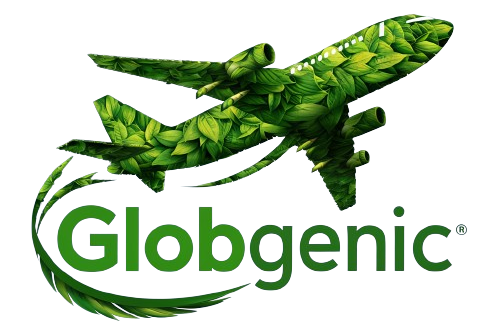Top 13 Tips for Farm Equipment Leasing: How to Save Money and Boost Productivity
Top 13 Tips for Farm Equipment Leasing: How to Save Money and Boost Productivity
The Benefits of Farm Equipment Leasing
In the world of agriculture, having the right equipment is essential for success. Whether you run a small family farm or a large commercial operation, investing in the latest machinery can be costly. This is where farm equipment leasing comes in. Leasing allows farmers to access the latest technology without the high upfront costs associated with purchasing equipment outright. Here are some of the key benefits of farm equipment leasing:
1. Cost Savings: Leasing allows you to avoid the large initial investment required to purchase new equipment, freeing up capital for other aspects of your farm operation.
2. Access to the Latest Technology: Leasing gives you access to the newest and most advanced equipment on the market, allowing you to stay competitive in the industry.
3. Flexibility: Leasing agreements are typically more flexible than loans or outright purchases, giving you the ability to upgrade or change equipment as needed.
4. Fixed Costs: With leasing, you have predictable monthly payments, making it easier to budget and plan for the future.
How to Save Money and Boost Productivity with Farm Equipment Leasing
If you’re considering farm equipment leasing, there are some key tips to keep in mind to ensure you’re getting the most value out of your agreement. Here are the top 13 tips for saving money and boosting productivity with farm equipment leasing:
Tip 1: Shop Around for the Best Lease Terms
When looking for farm equipment leasing options, don’t just settle for the first offer you come across. Shop around and compare lease terms from different providers to ensure you’re getting the best deal. Look for competitive interest rates, flexible payment schedules, and favorable terms and conditions.
Tip 2: Consider Used Equipment Leasing
While it’s tempting to lease brand new equipment, don’t overlook the option of leasing used machinery. Used equipment leasing can offer significant cost savings while still providing the functionality you need to run your farm.
Tip 3: Negotiate for Lower Monthly Payments
Don’t be afraid to negotiate with leasing providers to secure lower monthly payments. Providers may be willing to work with you to adjust the terms of the lease to better suit your budget and financial needs.
Tip 4: Take Advantage of Seasonal Leasing Deals
Some leasing providers offer seasonal deals and discounts, especially during the off-peak months. Take advantage of these offers to save money on leasing costs and maximize your productivity during peak farming seasons.
Tip 5: Opt for Lease Buyouts
Consider lease buyout options that allow you to purchase the equipment at the end of the lease term. This can be a cost-effective way to acquire equipment that you plan to use long-term.
Tip 6: Lease Multiple Pieces of Equipment Together
Leasing multiple pieces of equipment together can often result in discounted rates or special package deals. Consider bundling equipment leases to save money and streamline your farm operations.
Tip 7: Keep Up with Maintenance and Repairs
To ensure the longevity and productivity of leased equipment, be sure to keep up with regular maintenance and repairs. Proper care and maintenance can help prevent costly breakdowns and downtime, keeping your farm running smoothly.
Tip 8: Monitor Usage and Performance
Track the usage and performance of leased equipment to identify any inefficiencies or areas for improvement. By monitoring equipment closely, you can optimize productivity and ensure you’re getting the most value out of your lease.
Tip 9: Consider Equipment Inspection and Insurance
Before signing a lease agreement, consider having the equipment inspected to ensure it’s in good working condition. Additionally, consider purchasing insurance coverage to protect against any potential damage or accidents that may occur during the lease term.
Tip 10: Plan for Equipment Upgrades
As technology advances and your farm operation grows, you may need to upgrade your equipment to stay competitive. Plan for future equipment upgrades when negotiating lease terms to ensure you have the flexibility to upgrade as needed.
Tip 11: Take Advantage of Tax Benefits
Leasing equipment can offer tax benefits, such as deductions for lease payments and depreciation expenses. Consult with a tax expert to understand the potential tax advantages of leasing equipment for your farm operation.
Tip 12: Consider Lease Back Options
If you own equipment that is not currently in use, consider leasing it back to generate extra income. Lease back options can help offset leasing costs and provide additional revenue for your farm.
Tip 13: Review Lease Agreements Carefully
Before signing a lease agreement, carefully review the terms and conditions to ensure you understand all obligations and restrictions. Pay close attention to lease duration, payment terms, and any additional fees or penalties that may apply.
Conclusion
Farm equipment leasing can be a cost-effective and efficient way to access the latest technology and boost productivity on your farm. By following these top 13 tips for saving money and optimizing productivity with farm equipment leasing, you can make the most of your equipment agreements and set your farm up for success. Remember to shop around, negotiate for favorable terms, and stay proactive in maintaining and monitoring leased equipment to maximize its value and benefit to your operation.
Whether you’re a small-scale farmer or a large commercial producer, farm equipment leasing can offer significant advantages in terms of cost savings, flexibility, and access to the latest technology. By implementing these tips and strategies into your leasing approach, you can save money, increase productivity, and stay ahead of the competition in the ever-evolving agricultural industry.

